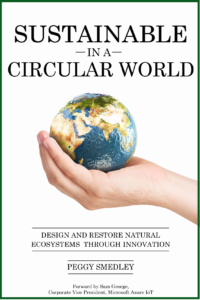In 2015, Gills Creek broke through dams, flooding homes and businesses, and destroyed much in its wake. According to Bailey Parker, executive director, Gills Creek Watershed Assn., much of this could have been avoided if we would have been better stewards of watersheds—which she was kind enough to spend time explaining—which is a catch basin for where every bit of water comes into one point.
Quite simply, a watershed is an area of land that channels—or sheds—rainfall and other water runoff into a single body of water. Everyone lives within a watershed, whether we know it or not, and our actions impact the rivers, lakes, and estuaries further downstream.
Enter the Watershed Champion program, which encourages individuals to join a community of stewards working together to protect the natural waters of the Gills Creek Watershed and beyond. For this column, I am going to explain what we all need to do to become a champion in three steps.
First, you must know your watershed. Locate your house within the watershed and see how runoff from your yard will reach the nearest body of water. Check. So, the first step in this program is simply to identify your watershed and its proximity to you. Gills Creek Watershed Assn., offers maps on its website to make it very easy to locate this.
Second, improve and sustain your water quality. You will need to do at least three of the following to meet certification requirements. As you can see, there are a lot of options to choose from.
- Eliminate or reduce the use of chemical fertilizers, insecticides, and/or herbicides.
- Pick up and properly dispose of pet waste from your yard.
- Reduce the need for irrigation and chemical fertilizers by reducing lawn area and/or increasing planting of native species.
- Use native groundcovers and leave mulch to stabilize erosion-prone areas and prevent erosion.
- Commit to helping keep the storm drain closest to your home clear of debris and trash.
- Have a rain garden in your yard to help capture runoff.
- Harvest rainwater with rain barrels or other devices.
- Minimize impervious hard surfaces such as concrete, mortared, or asphalt driveways, sidewalks, and patios on your property.
Third, enrich the ecosystem. Choose options from the guidelines to make your yard a healthy part of the ecosystem. Some of the options are included below. Again, there are a lot of alternatives to choose from here as well.
- Plant more native trees, shrubs, and plants.
- If you live along a pond or creek, have a buffer zone.
- Retain as much plant biomass in your yard as possible.
- Have a water source for wildlife.
- Help to inform the landscaping industry.
- Help to get your neighbors involved.
- Engage with children and have them complete at least one of the activities such as build a bird house, make a bird feeder, make a toad house, plant a pollinator garden, create a compost bin, and more.
Achieve all three steps and you can become a certified Watershed Champion, which is given a certificate and yard sign. Champions are recognized in a newsletter and in other media outlets. Also, of course, neighbors will see the benefits of the effort and may do the same. Let’s also not forget the ultimate reward here: being better stewards of our environment and preventing potential floods like the one that happened back in 2015.
As Parker explains in on a recent episode of Project Sustainability Podcast, every little act makes a difference—and can help to reduce the impact of floods. What little action will you take this week, as we inch closer to Earth Day?
Want to tweet about this article? Use hashtags #IoT #sustainability #AI #5G #cloud #edge #futureofwork #digitaltransformation #green #ecosystem #environmental #circularworld


